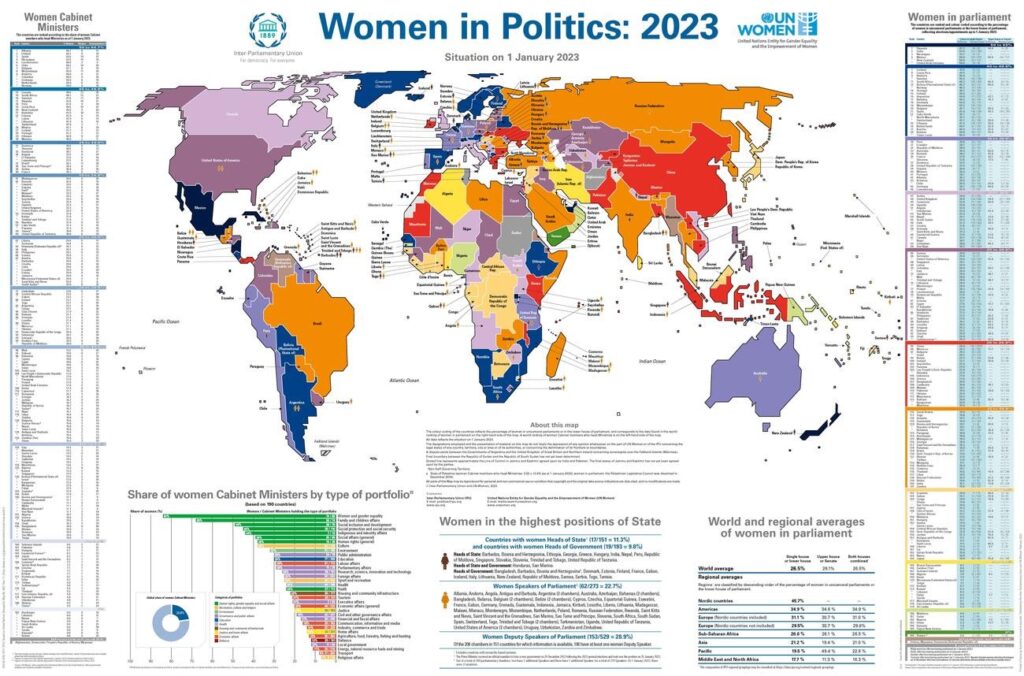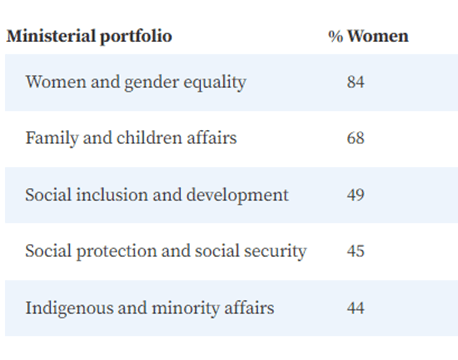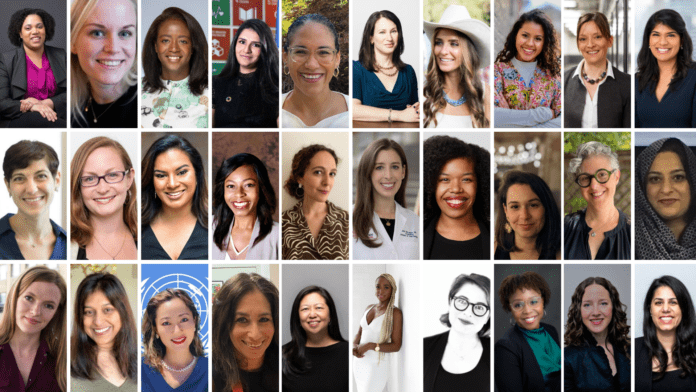
The 2023 edition of the IPU-UN Women Map of Women in Politics shows that there are now more women than ever in positions of political decision-making, but gender parity is still a long way off. The 67th session of the Commission on the Status of Women, the largest UN conference on gender equality, featured the presentation of the new IPU-UN Women Map of Women in Politics. The focus theme for this year is “Education in the digital age for attaining gender equality and the empowerment of all women and girls”.
As of January 1, 2023, the map shows the most recent ranks and regional distribution of women in executive positions and national parliaments. According to the data, more women are now holding senior positions in administration and parliament, albeit some areas still lag far behind.
UN Women Executive Director Sima Bahous said: “This data tells us that women are still the minority of Heads of State and Government. They are still deeply under-represented in government leadership, at less than one in four Cabinet Ministers, with men continuing to dominate critical portfolios such as the economy, defense, and energy. Full democracy needs the equal participation of women in all its processes. Yet, continued violence and threats—online and offline—against women leaders, candidates, and voters blight the potential for their voices and knowledge to bring the change that is so urgently needed for economic and social recovery. The world cannot afford to continue this injustice. We need a paradigm shift that brings true equality.”
IPU Secretary General, Martin Chungong, said: “We’re seeing ongoing progress in the number of women in politics this year, which is encouraging. However, we still have a long way to go to reach gender equality when we see the current rates of growth. With the interlinked crises of climate change, geopolitical tensions, economic instability, and social inequality, the world needs to better harness the talents of women and encourage them to enter politics sooner rather than later.”
Increasing numbers of women in State’s top positions
17 out of 151 countries, excluding those with monarchical systems, have female heads of state as of January 1, 2023, while 9.8% of countries have female heads of government (19 out of 193). When compared to ten years earlier, these numbers were respectively 5.3% and 7.3%, therefore there has been an increase. Europe continues to have the most nations with female leaders out of all the regions (16).
Majority of female cabinet ministers come from Europe and the Americas
As of January 1, 2023, women make up 22.8% of Cabinet Ministers. The regions having the highest proportion of female cabinet members are Europe and North America (31.6%), followed by Latin America and the Caribbean (30.1%).
The majority of other regions, however, have a serious underrepresentation of women, with figures as low as 10.1% in Central and Southern Asia and 8.1% in the Pacific Islands (Oceania excluding Australia and New Zealand). Only 13 countries, mostly in Europe, have gender-equal cabinets, with 50 percent or more of women cabinet members as heads of ministries.

Women lead human rights, gender equality, and social protection portfolios
Women tend to lead policy areas related to gender equality, human rights, and social affairs.

The data also reveals that, despite their underrepresentation, women hold major policy portfolio positions in the fields of education (32%), public administration (30%), and the environment (32%). (30 percent). But men still have a disproportionate amount of power in the economy, the military, the legal system, and home affairs. Women make up only 11% of Cabinet Ministers overseeing the defence and local government portfolios, 8% of the transport portfolios, and 12% of the ministries for energy, mining, and natural resource fuels.
Greater representation of women in legislative leadership
The updated data also reveals that there are now 22.7% more female Speakers of Parliament than there were in 2021, up from 20.9%. The Map was released in response to the annual Women in Parliament report from the IPU, which shows that the percentage of women MPs worldwide has increased slightly to 26.5% from 25.5% in 2021.
The IPU statistics on women in parliament also reveal significant geographical disparities: the Middle East and North Africa region continues to rank last, while the European Nordic countries are at the top of the regional ranking (45.7% of MPs are women) (17.7 percent of MPs are women).
Source: UN Women




